Are you passionate about crafting the perfect cup of coffee and have dreams of creating a cozy and welcoming space for coffee enthusiasts? Then, you’re on the right track.
From selecting the ideal location and designing an inviting ambiance to sourcing quality beans and creating a menu that delights, we’ve got you covered.
Whether you’re a seasoned entrepreneur or a first-time business owner, this guide will provide you with the knowledge and insights needed to navigate the exciting journey of starting and running your own coffee shop.
In this comprehensive guide, we will walk you through the essential steps and strategies to turn your coffee shop dream into a thriving reality.
The Gist of Coffee Shop Business in the Philippines
The idea of opening a coffee shop business may sound easy-peasy, but funding is very crucial when it comes to the first few months of your business. During the initial months, you might face financial loss and insufficient funds will lead you to close or sell your coffee shop. It’s important to consider that your coffee shop must be the “go-to-or-favorite-place” of your community.
Entering a coffee shop business aligned with the F&B (Food and Beverage) field. Technically, you are selling a variety of coffee, either hot or cold, or might be accompanied by snacks or pastries, depending on your preference.
READ ALSO: Business Philosophies of the top 5 most Successful Businessmen in the Philippines
Formula and System
Starting a successful coffee shop business in the Philippines requires careful planning, a solid formula, and effective systems. Here’s a step-by-step approach to help you establish your coffee shop business:
1. Target Market
Determine the specific demographic and psychographic characteristics of your target market. Consider factors like age, lifestyle, income level, and preferences. For instance, you may target urban professionals, students, or tourists, each of whom may have different priorities, areas, and needs.
2. Problems and Pain Points of Customers
Starting a coffee shop business can be rewarding, but it comes with its share of challenges and pain points for customers.
- Price Sensitivity: Filipinos can be price-conscious consumers. Setting the right pricing strategy is essential to strike a balance between profitability and affordability for your target market.
- Long Wait Times: Slow service and long wait times can be frustrating for customers, especially during busy hours. Efficient operations and well-trained staff are crucial to managing customer flow effectively.
- Limited Menu Options: Some customers may desire a more diverse menu with alternative options, such as non-dairy milk alternatives, healthy snacks, or a variety of tea selections.
- Lack of Ambiance: The ambiance of the coffee shop dramatically influences the customer’s experience. If the atmosphere is uncomfortable or unwelcoming, customers may not want to stay and may not return.
- Inadequate Seating: Limited seating space can discourage customers from spending time in your coffee shop or organizing meetings, which can affect their overall experience.
- Wi-Fi and Electrical Outlets: In today’s digital age, customers often seek places to work or study. Providing reliable Wi-Fi and ample electrical outlets is essential to attract this segment.
- Location Accessibility: If your coffee shop is in an inconvenient or hard-to-reach location, it may deter potential customers from visiting.
READ ALSO: 6 Food Business Ideas for as low as P1,000
3. Solutions
To address the problems and pain points of customers when starting a coffee shop business, consider implementing the following solutions:
- Value Pricing: While maintaining quality, find a pricing strategy that balances affordability and profitability. Consider offering different sizes or bundling options to cater to varying customer budgets.
- Efficient Operations: Streamline your processes, especially during peak hours, to minimize wait times. Use technology like mobile ordering or self-serve stations to speed up service.
- Diverse Menu: Offer a variety of coffee options, including different brewing methods and specialty drinks. Consider including non-coffee beverages, snacks, and possibly a selection of teas to cater to a broader customer base.
- Creating a Welcoming Atmosphere: Pay attention to your coffee shop’s interior design, lighting, and music to create a cozy and inviting ambiance. Comfortable seating arrangements and well-ventilated spaces will encourage customers to spend more time.
- Ample Seating: Maximize your coffee shop’s space to accommodate various seating preferences, including individual tables, group seating, and cozy corners for more private conversations.
- Wi-Fi and Electrical Outlets: Provide reliable Wi-Fi and ample electrical outlets to cater to customers who want to work or study in your coffee shop. Encourage productivity by offering designated workspaces.
- Convenient Location: Choose a location with easy access and visibility. Consider areas near offices, universities, or transportation hubs to attract a steady flow of customers.
4. Financial Goals
When starting a coffee shop business, setting clear financial goals is crucial for guiding your business toward success and sustainability.
Profitability Targets: Set specific, measurable, achievable, relevant, and time-bound (SMART) profitability targets. For example, aim to achieve a certain level of monthly or yearly profit within a specified timeframe.
Minimum Target:
- PHP1,000, PHP2,000 (sale per day)- In the first three (3) months
Build-Up Minimum Target:
- PHP10,000 (sale per day) X 30 Days (Monday-to-Friday) = PHP300,000 a month
- PHP300,000 Minus Your Overhead= PHP150,000 Income Per Month
Increase Sales by 20% Per Year
- First Year: PHP10,000 Per Month
- Second Year: PHP12,000 Per Month
- Third Year: PHP15,000 Per Month
- Fourth Year: PHP18,000 Per Month
- Fifth Year: PHP20,000 Per Month
Sales Revenue Goals: Set realistic sales revenue targets based on your market research and projected customer footfall. Consider seasonal fluctuations and adjust your goals accordingly.
Sales in Coffee Shop Break-Down:
- Beverage: 60% to 70%
- Food: 40% to 50%
Gross Margin Targets: Determine the gross margin you aim to achieve. Gross margin is the difference between your total sales revenue and the cost of goods sold (COGS). It indicates how efficiently you’re producing and selling your products.
- Gross Profit: 50% Before the Overhead
READ ALSO: How to Start a Sari-Sari Store Business
5. System and Workflow
Inventory:
- Determine the total amount of capital required using worksheets or Excel to start your coffee shop. This should include expenses for location setup, renovation, equipment purchase, initial inventory, permits, licenses, and marketing.
- Smallest Coffee Shop with two (2) to three (3) tables= PHP200,000- PHP300,000.
- Larger Coffee Shop with Venue- PHP500,000- PHP1,000,000.
Avoid Underestimating Cost:
- Capital: PHP 200,000
- Add 30% to 50% Buffer for Unforeseen Expenses
- Set Aside At Least Three (3) to Six (6) Months of Emergency Fund
Avoid Not Investing in Quality Equipment:
- Invest in a Long-Term and Durable Coffee Maker among others
Avoid Ignoring Local Regulations and Laws:
- Register to Local Government, Bureau of Internal Revenue (BIR), and Department of Trade and Industry (DTI)
Location: Target Customers:
- With cars- With Parking Space
- Without cars- Less Traffic/ Near School/ Business District/Hospital/Tourist Spot
Talent and Skills: Business Owners Must Haves
- Be Knowledgeable about Coffee
- Passionate in Coffee
- Know How to Make Coffee
Successful Brands:
- Bo’s Coffee
- Coffee and Beans
- Starbucks
Manpower:
Staffing Needs: Determine the staffing needs of your coffee shop based on factors such as the size of your establishment, expected customer flow, and the range of services you’ll offer.
Three (3) Major Important People in the Coffee Shop
Starting Monthly Salary:
- Barista- PHP10,000-PHP15,000
- Cashier- PHP8,000-PHP12,000
- Server- PHP8,000-PHP12,000
Handle Transactions:
- Point of Sale (POS) System: Invest in a reliable POS system that allows you to process orders, manage inventory, and track sales. Modern POS systems also offer features like digital receipts, analytics, and integration with payment gateways.
- Cash Payments: Train your staff on how to handle cash transactions accurately and securely. Provide them with the necessary cash handling procedures, including making changes, counting money, and securing the cash register.
- Card Payments: Offer various payment options, including credit and debit card payments. Ensure that your POS system supports card payments and is compliant with the necessary security standards.
- Mobile Payments: Consider accepting mobile payment apps such as GCash or Pay Maya, which are popular in the Philippines. These apps allow customers to make payments using their smartphones.
- QR Code Payments: Many customers use QR code-based payment methods, such as QR codes from popular payment providers or mobile apps. Display QR codes at the checkout counter for easy scanning by customers.
- Menu Pricing: Clearly display menu items along with their prices. Make sure prices are accurate, including any taxes or service charges that apply.
- Receipts: Provide customers with receipts for their purchases. Modern POS systems often offer digital tickets via email or SMS, reducing paper waste.
READ ALSO: Negosyong Pinoy: Starting a Street Food Business
How to Design an Inviting Ambiance for a Coffee Shop in the Philippines?
Create a space that reflects the local culture, offers comfort, and enhances the overall coffee experience. Here are some ideas to consider:
- Tropical Elegance: Embrace the tropical environment by incorporating elements like lush greenery, palm leaves, and natural textures. Use light, airy colors like soft blues, warm neutrals, and light woods to create a relaxing atmosphere reminiscent of the Philippines’ coastal beauty.

- Local Art and Crafts: Display local artwork, crafts, and textiles that showcase the rich cultural heritage of the Philippines. Incorporate traditional patterns, fabrics, and handcrafted items to give the space an authentic and unique touch.
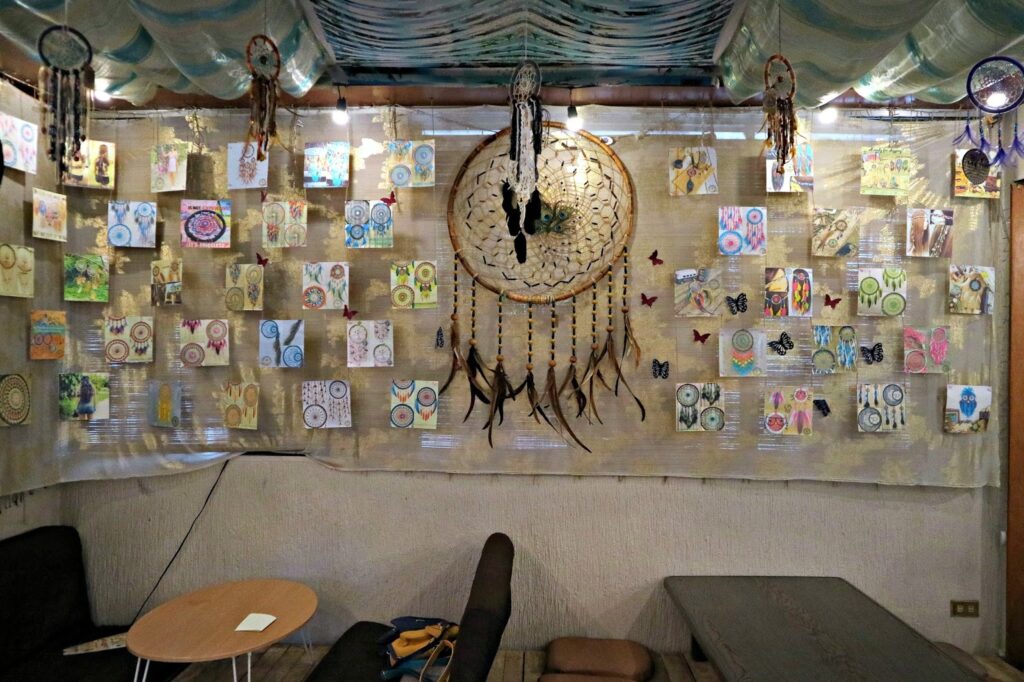
- Filipino Flavors: Integrate Filipino flavors into the design. Use materials like bamboo, rattan, and capiz shells for furniture and decor. You can also use locally-inspired patterns and designs for upholstery and cushions.

- Open Layout: Create an open and spacious layout that allows customers to move around freely. Avoid overcrowding the space to maintain a comfortable and relaxing environment.
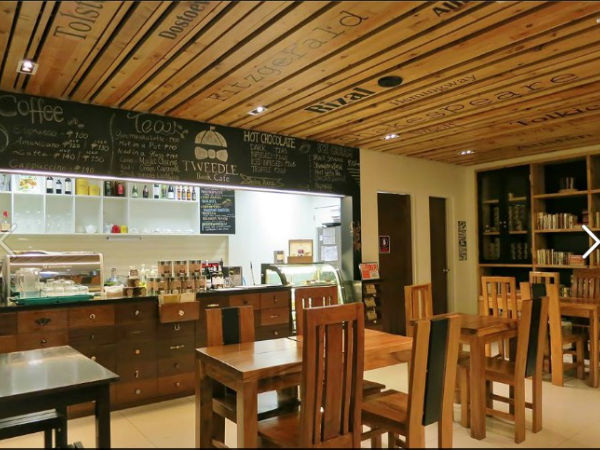
- Ample Natural Light: Maximize natural light by using large windows and open curtains. This not only saves energy but also enhances the welcoming ambiance of the coffee shop.

READ ALSO: Top Tips in Managing Your Sari-Sari Store Business
- Cozy Seating Areas: Offer a variety of seating options, including comfortable lounge chairs, cozy sofas, communal tables, and bar-style seating. Provide options for both solitary coffee enthusiasts and groups of friends to enjoy their time.
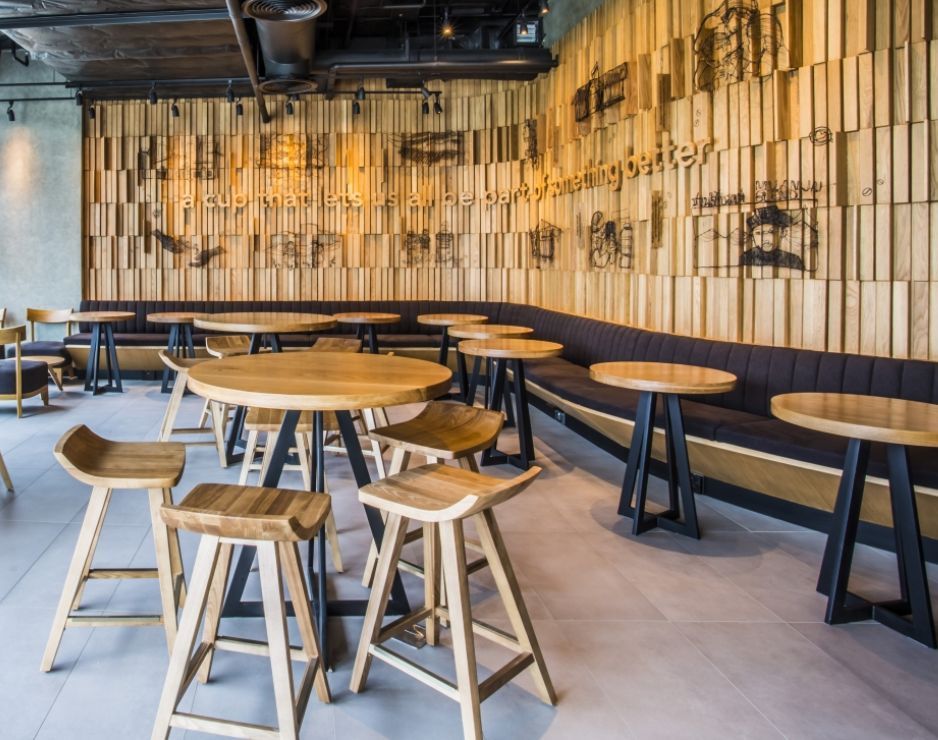
- Café Garden: If possible, consider having an outdoor garden or patio area where customers can enjoy their coffee surrounded by nature. This would be an excellent addition in a tropical setting like the Philippines.
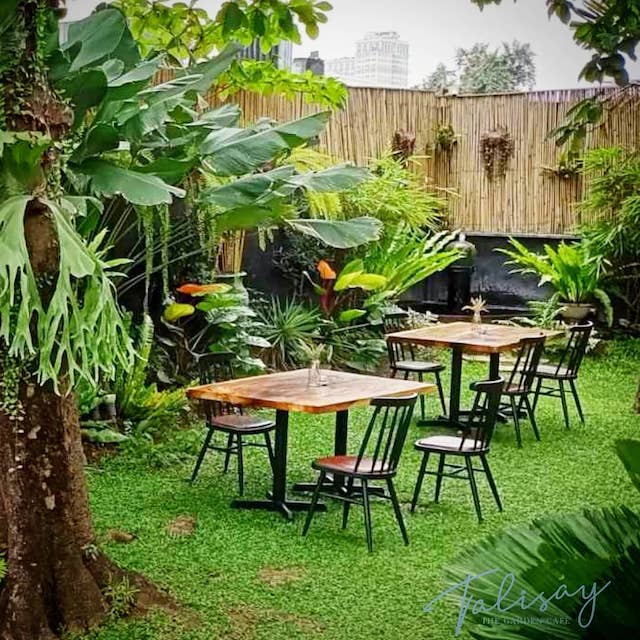
- Music and Ambiance: Play soft, relaxing, and culturally relevant music that complements the environment. The right music can significantly contribute to the ambiance and make customers feel at ease.

- Interactive Elements: Provide interactive elements like a display of coffee beans or a small roasting corner, allowing customers to engage with the coffee-making process and enhancing their experience.
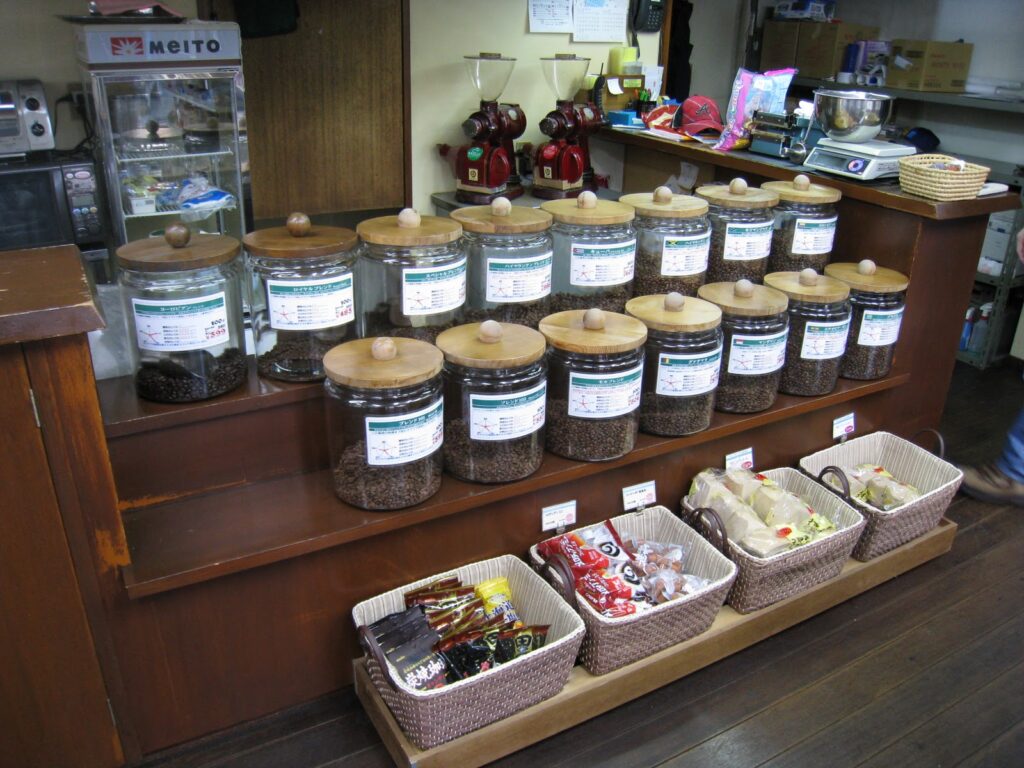
- Local Flavors on the Menu: Extend the Filipino influence to the menu by offering coffee blends and snacks that incorporate local flavors and ingredients.

- Wi-Fi and Charging Stations: Provide free Wi-Fi and ample charging stations to cater to the modern-day needs of customers who might want to work or relax with their devices.
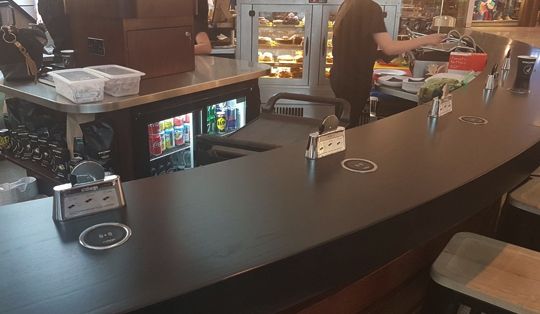
Starting a coffee shop is a journey that requires dedication, passion, and a strong work ethic. While challenges may arise, with careful planning, a clear vision, and a commitment to providing a delightful coffee experience, you can create a successful and beloved coffee shop in the Philippines.
READ ALSO: Negosyong Pinoy: Starting a PisoNet Business here in the Philippines